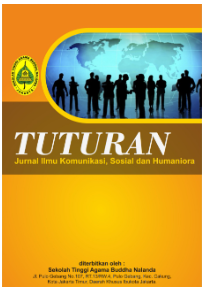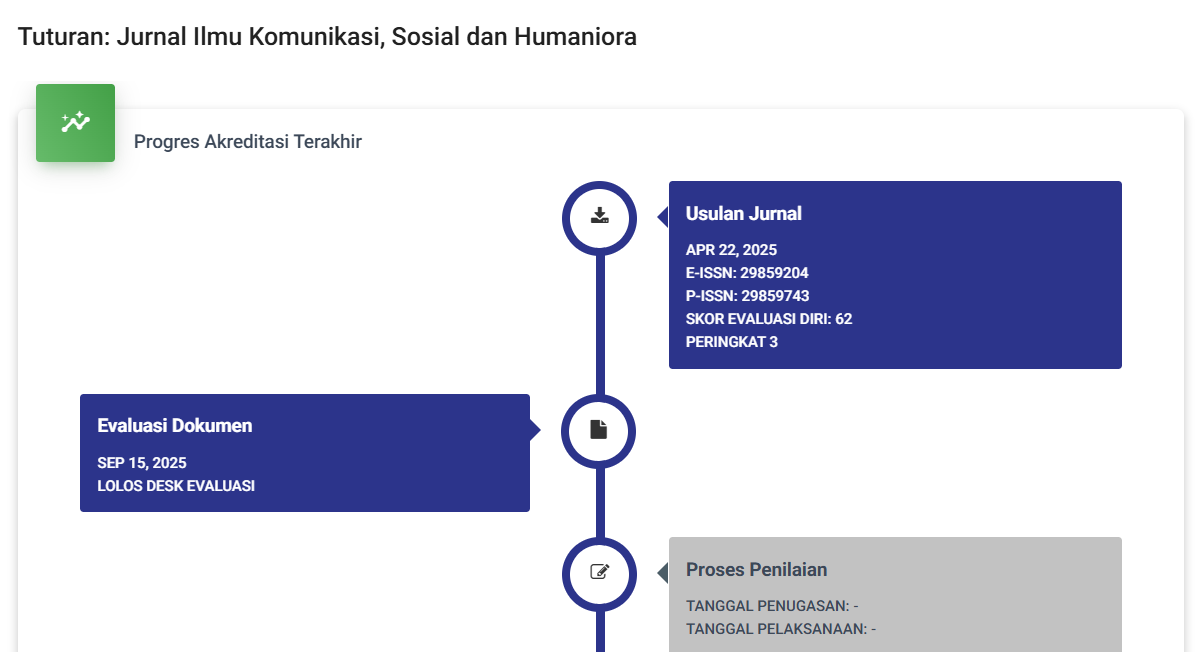Kehancuran dan Harapan Baru: Gempa, Tsunami dan Likuifaksi di Palu Sulawesi Tengah 2018
DOI:
https://doi.org/10.47861/tuturan.v2i3.1108Keywords:
Natural Disasters, Nomoni Festival, Balia DanceAbstract
Natural disasters are events that require significant attention, and it is imperative to protect nature and remain submissive to the Creator. The purpose of this research is to express the author's concern regarding the tragedy that occurred in the city of Palu, Central Sulawesi, on September 28, 2018. In this study, the researcher employed a literature review method, sourcing references from journals, books, and information related to the Palu tragedy at that time. The findings of this research indicate that on September 28, 2018, at 18:42 WITA, a natural disaster occurred in the form of a 7.4 magnitude earthquake, followed by a tsunami and liquefaction. This was triggered by underwater sediment landslides. Mythical aspects related to this tragedy are issues that have not been scientifically validated. The Nomoni Festival, which includes the Balia Dance, is considered by some community members to be contrary to their religious beliefs. Some people believe that such practices invite divine wrath, manifesting as natural disasters. However, scientific explanations for the disaster indicate that the earthquake and tsunami were the result of tectonic activity, which can be geologically explained. It is essential to combine scientific understanding with respect for local beliefs to enhance disaster preparedness and mitigation in the future. This research aims not only to reveal the scientific facts behind the Palu tragedy but also to raise awareness about the importance of maintaining ecological balance and gaining a deeper understanding of natural phenomena.
References
Adlini, M. N., Dinda, A. H., Yulinda, S., Chotimah, O., & Merliyana, S. J. (2022). Metode Penelitian Kualitatif Studi Pustaka. Edumaspul: Jurnal Pendidikan, 6(1), 974–980. https://doi.org/10.33487/edumaspul.v6i1.3394
Aprilianingrum, D. (2019). Representasi Bencana Dalam Foto Seri “Cerita Kloset Pascagempa-Tsunami Palu” (Studi Analisis Semiotik Terhadap Foto Seri Karya Beawiharta Yang Dimuat Di Beritasatu.Com). Jurnal Jurnalisa, 5(1), 31–42. https://doi.org/10.24252/jurnalisa.v5i1.9896
BERNARDA, R. P. (2020). Mitigasi Berbasis Pengetahuan Lokal Yang Terlupakan: Studi Kasus Tragedi Lembah Palu 28 September 2018. http://etd.repository.ugm.ac.id/penelitian/detail/192313
Chikal Wulandari. (2019). “KEBERADAAN TARI BALIA PADA SUKU KAILI DI KECAMATAN PALU SELATAN SULAWESI TENGAH”. Estuarine, Coastal and Shelf Science, 2020(1), 473–484.
Darmalaksana, W. (2020). Metode Penelitian Kualitatif Studi Pustaka dan Studi Lapangan. Pre-Print Digital Library UIN Sunan Gunung Djati Bandung, 1–6.
F.D Ramadhani. (2017). STRATEGI INTEGRATED MARKETING COMMUNICATIONDINAS KEBUDAYAAN DAN PARIWISATA DALAM MENINGKATKAN PARIWISATA KOTA PALU (STUDI KASUS FESTIVAL PESONA PALU NOMONI). Jurnal Sains Dan Seni ITS, 6(1), 51–66. http://repositorio.unan.edu.ni/2986/1/5624.pdf%0Ahttp://fiskal.kemenkeu.go.id/ejournal%0Ahttp://dx.doi.org/10.1016/j.cirp.2016.06.001%0Ahttp://dx.doi.org/10.1016/j.powtec.2016.12.055%0Ahttps://doi.org/10.1016/j.ijfatigue.2019.02.006%0Ahttps://doi.org/10.1
Grace Natasya. (2019). KOMODIFIKASI RITUAL ADAT BALIA DALAM GLOBALISASI: STUDI.
Khairil, M., & Ranti, R. A. (2018). Festival Pesona Palu Nomoni Dalam Pelestarian Budaya Kaili di Kota Palu. Kinesik, 5(2), 79–87.
LE, H., P, S., & S, T. (2019). Peningkatan Kesadaran Masyarakat terhadap Kerusakan Bangunan dan Lingkungan Pasca Gempa, Tsunami dan Likuifaksi di Palu Sulawesi Tengah. JURNAL Comunità Servizio: Jurnal Terkait Kegiatan Pengabdian Kepada Masyarakat, Terkhusus Bidang Teknologi, Kewirausahaan Dan Sosial Kemasyarakatan, 1(2), 208–222. https://doi.org/10.33541/cs.v1i2.1290
Mushawwir, A. (2020). RESEPSI MASYARAKAT KELURAHAN PETOBO TERHADAP FENOMENA LIKUIFAKSI (Studi Living Hadis). Diajukan kepada Fakultas Ushuluddin Universitas Islam Negeri Sunan Kalijaga Yogyakarta Untuk Memenuhi Sebagian Syarat Memperoleh Gelar Sarjana Agama (S. Ag.).
Nuraeni, I. (2023). Napak Tilas Bencana Pasigala dalam Sastra: Kajian Sastra Perjalanan Terhadap Novel “28 September: dalam Tragedi 7,4 Magnitudo” Karya Sastra Lingga Adiaramu. Prosiding Seminar Nasional Dan Internasional HISKI, 3, 314–323.
Pratomo, R. A., & Rudiarto, I. (2013). Jurnal Sulawesi Tengah. Biro Penerbit Planologi Undip, 9(2), 174–182.
Sampoerno, A. D. (2018). THE ROLE OF THE PALU CITY PUBLIC RELATION OFFICERS IN THE FESTIVAL PALU NOMONI IN MAINTAINING IMAGE OF PALU CITY PERANAN HUMAS PEMDA KOTA PALU PADA EVENT FESTIVAL PESONA PALU Indonesia salah satu negara bukti akan kekayaan negeri Republik unik, khas, dan. 4.
Sarapang, H. T., Rogi, O. H. A., & Hanny, P. (2019). Analisis Kerentanan Bencana Tsunami Di Kota Palu. Jurnal Spasial, 6(2), 432–439. http://repository.ub.ac.id/id/eprint/8056
Veny Ristanti. (2022). KEDUDUKAN PERATURAN DAERAH KOTA PALU NOMOR 16 TAHUN 2011 TENTANG RENCANA TATA RUANG WILAYAH KOTA PALU TAHUN 2010–2030 PASCA BENCANA ALAM 28 SEPTEMBER 2018. Science, 7(1), 1–8. http://link.springer.com/10.1007/s00232-014-9701-9%0Ahttp://link.springer.com/10.1007/s00232-014-9700-x%0Ahttp://dx.doi.org/10.1016/j.jmr.2008.11.017%0Ahttp://linkinghub.elsevier.com/retrieve/pii/S1090780708003674%0Ahttp://www.ncbi.nlm.nih.gov/pubmed/11910031%0Ahtt
Downloads
Published
How to Cite
Issue
Section
License
Copyright (c) 2024 TUTURAN: Jurnal Ilmu Komunikasi, Sosial dan Humaniora

This work is licensed under a Creative Commons Attribution 4.0 International License.








